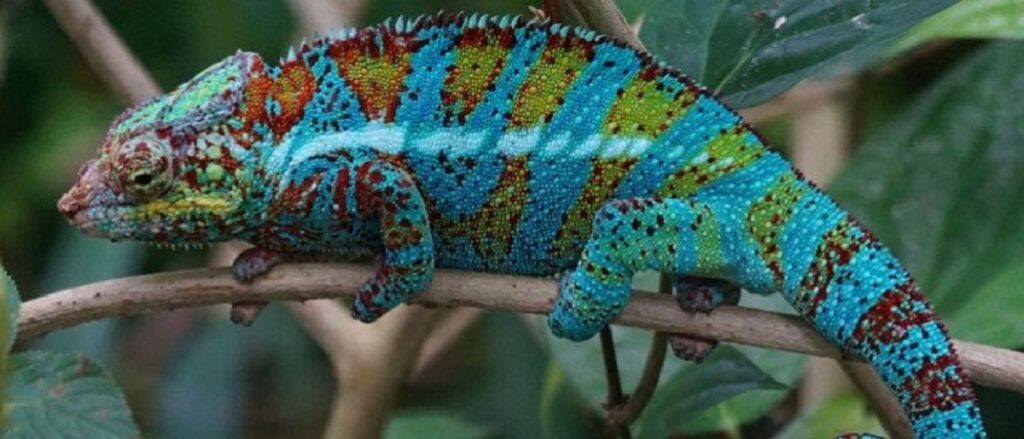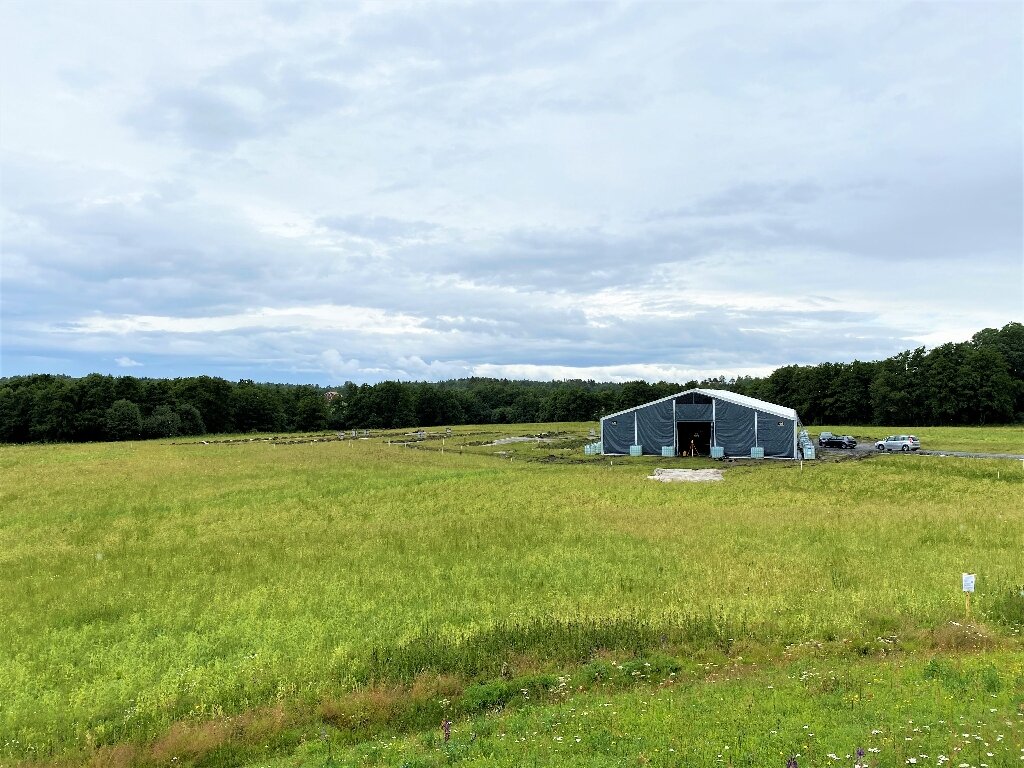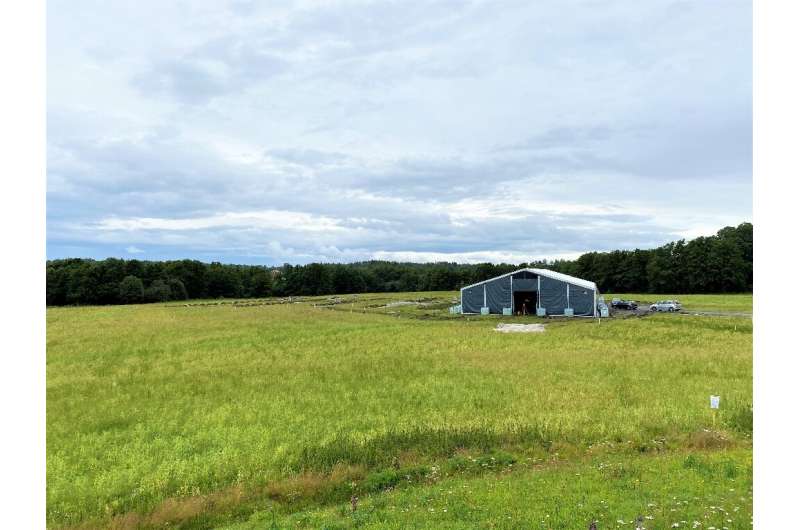Your bearded dragon might not have shed in a while due to inadequate humidity levels or lack of proper nutrition.

Credit: www.sciencenews.org

Understanding Shedding In Bearded Dragons
Shedding, or molting, is a natural process that bearded dragons go through as they grow. It involves the shedding of their outer layer of skin, known as the epidermis, so that a new layer can replace it. Shedding is essential for a bearded dragon’s health and well-being, as it helps them maintain their scales, regulate body temperature, and prevent skin infections. However, there may be instances when your bearded dragon hasn’t shed in a while. In this blog post, we will explore the reasons behind this phenomenon and the importance of regular shedding for your pet’s overall health.
An Overview Of The Shedding Process
The shedding process in bearded dragons typically starts at a young age when they hatch from their eggs. As they grow, bearded dragons regularly shed their skin to accommodate their increasing size. Shedding occurs in distinct stages, which include:
- Pre-shedding: This is the initial stage where you may notice certain changes in your bearded dragon’s appearance and behavior. They may become less active and show signs of dry and dull skin.
- Shedding: During this stage, your bearded dragon’s skin will start to peel off in patches. You may notice pieces of shed skin around their enclosure.
- Post-shedding: Once the shedding process is complete, your bearded dragon’s new layer of skin will be revealed. They will appear brighter and more vibrant than before.
Understanding the shedding process is crucial for identifying any irregularities and ensuring the overall health of your bearded dragon.
Factors Affecting Shedding
Several factors can affect a bearded dragon’s shedding frequency and quality. These may include:
- Age: Younger bearded dragons tend to shed more frequently than older ones as they are still growing.
- Diet: A balanced diet is crucial for healthy shedding. Inadequate nutrition can lead to poor shedding or even retained shed, where pieces of skin get stuck.
- Humidity: The humidity levels in your bearded dragon’s enclosure play a significant role in the shedding process. Low humidity can cause dry skin, making shedding more challenging.
- Hydration: Proper hydration is essential for your bearded dragon’s overall health and shedding. Dehydration can impede the shedding process and result in incomplete shed.
- Illness or stress: Bearded dragons experiencing illness or high levels of stress may have difficulty shedding normally.
By paying attention to these factors, you can help ensure a smooth shedding process for your bearded dragon.
The Importance Of Regular Shedding
Regular shedding is vital for the overall health and well-being of your bearded dragon. It allows them to grow, refresh their skin, and maintain their scales’ integrity. Proper shedding prevents skin infections, which can occur if shed skin remains stuck or if the process is disrupted. Additionally, shedding helps your bearded dragon regulate their body temperature effectively. It allows for the growth of new blood vessels and skin tissues, ensuring they can continue to thrive.
As a responsible pet owner, it’s essential to monitor your bearded dragon’s shedding process and make any necessary adjustments to their care if needed. By addressing factors that may hinder shedding and ensuring a suitable environment, you can promote healthy shedding and support your bearded dragon’s overall well-being.

Credit: phys.org
Possible Reasons For Delayed Shedding
A healthy bearded dragon sheds its skin regularly as part of its natural growth process. However, if your bearded dragon hasn’t shed in a while, there may be some underlying reasons causing this delay. Identifying these potential causes can help you address the issue and ensure the well-being of your scaly companion.
Improper Husbandry
One of the common reasons for delayed shedding in bearded dragons is improper husbandry. This refers to inadequate care and maintenance of their enclosure and living conditions.
Some factors that can contribute to improper husbandry include:
- Poor temperature regulation: Bearded dragons require specific temperature ranges in their habitat to facilitate shedding. If the temperature is too low or too high, it can disrupt their shedding cycle.
- Inadequate humidity levels: Bearded dragons need a certain level of humidity to support healthy shedding. If the humidity is too low, their skin may dry out and make shedding difficult.
- Inadequate lighting: Proper UVB lighting is crucial for bearded dragons’ overall health and shedding. Insufficient exposure to UVB rays can lead to delayed shedding.
| Signs of improper husbandry: | Possible solutions: |
|---|---|
| Dry or brittle skin | – Adjust temperature and humidity levels in the enclosure |
| Restlessness or decreased appetite | – Ensure proper UVB lighting, consider replacing outdated bulbs |
| Poor quality shed or retained shed | – Consult a reptile veterinarian for guidance |
Stress Or Illness
Stress and illness can also contribute to delayed shedding in bearded dragons. These factors can disrupt their natural shedding cycle and affect their overall health.
Some possible causes of stress or illness include:
- Poor diet or nutritional deficiencies
- Inadequate socialization
- Inappropriate handling
- Presence of parasites or infections
- Change in environment or habitat
It is crucial to observe your bearded dragon for any signs of stress or illness, such as:
- Lethargy or lack of energy
- Loss of appetite
- Abnormal behavior or aggression
- Weight loss
- Abnormal stool or urates
If you notice any of these symptoms, it’s important to consult a reptile veterinarian to identify and address the underlying cause.
Skin Issues
In some cases, delayed shedding can be a result of skin issues or abnormalities. Skin problems can make it difficult for the old skin to slough off and impede the shedding process.
Examples of skin issues that can cause delayed shedding include:
- Aggressive shedding, where the skin appears tight or constricted
- Cuts or abrasions on the skin
- Presence of retained shed, where pieces of old skin remain attached to the body
- Blistering or skin infections
If you notice any of these skin issues, it’s important to take appropriate action. Ensure that the enclosure is properly cleaned and sanitized to prevent potential infections. If the skin issues persist, it is advisable to seek professional advice from a reptile veterinarian.
Tips For Ensuring Proper Shedding
Proper shedding is essential for the health and well-being of your bearded dragon. If your bearded dragon hasn’t shed in a while, there could be a few reasons behind it. In this section, we will provide you with some tips to ensure that your bearded dragon sheds properly.
Maintaining Optimal Humidity
One of the crucial factors for proper shedding in bearded dragons is maintaining optimal humidity levels in their habitat. The ideal humidity range for shedding is between 30% to 40%. If the humidity level is too low, it can result in dry skin, making it difficult for the old skin to loosen and shed off. On the other hand, if the humidity level is too high, it can lead to excessive moisture, causing the old skin to stick to the new skin.
To maintain optimal humidity:
- Provide a humidity gauge in your bearded dragon’s enclosure to monitor the humidity levels regularly.
- Use a reptile-friendly hygrometer to accurately measure the humidity level.
- If the humidity is too low, you can increase it by misting the enclosure with water or using a reptile fogger.
- Ensure that the enclosure is well-ventilated to prevent excessive moisture buildup.
Providing Adequate Nutrition
Proper nutrition plays a vital role in promoting healthy shedding in bearded dragons. A balanced diet rich in essential nutrients, such as vitamins and minerals, is crucial for maintaining optimal skin health. Lack of proper nutrition can result in inadequate hydration and nutritional deficiencies, leading to problems with shedding.
To provide adequate nutrition:
- Offer a variety of insects, such as crickets, dubia roaches, and mealworms, as the primary source of protein.
- Include a wide range of leafy greens, vegetables, and fruits to provide essential vitamins and minerals.
- Consider dusting the insects with a calcium supplement to ensure your bearded dragon gets enough calcium for healthy skin and shedding.
Offering Appropriate Hiding Places
Bearded dragons require appropriate hiding places in their enclosure to feel secure and reduce stress. These hiding places mimic their natural habitat and provide a safe space for shedding. A lack of suitable hiding places can make bearded dragons stressed, which can negatively impact their shedding process.
To offer appropriate hiding places:
- Include multiple hiding spots, such as reptile caves or dense foliage, to create a sense of security.
- Ensure the hiding places are appropriately sized for your bearded dragon, allowing them to enter and exit comfortably.
- Place the hiding spots in different areas of the enclosure to provide variety and options for your bearded dragon.

Credit: phys.org
Frequently Asked Questions For Why Hasn’t My Bearded Dragon Shed In A While
How Long Can A Bearded Dragon Go Without Shedding?
Bearded dragons typically shed every 4-6 weeks, but it can vary. They shed to grow and replace old skin.
What To Do If Your Bearded Dragon Is Not Shedding?
If your bearded dragon is not shedding, ensure the enclosure has a proper humidity level, maintain a consistent temperature, provide a shedding aid like a warm bath, and offer a rough surface for the dragon to rub against. If the problem persists, consult a veterinarian.
How Do Bearded Dragons Act Before They Shed?
Before shedding, bearded dragons may become less active, eat less, and have a duller appearance. They may also show signs of irritation like rubbing against objects and scratching. It’s essential to provide them with proper humidity to facilitate a smooth shedding process.
How Do You Get A Stuck Bearded Dragon Shed Off?
To remove a stuck shed from a bearded dragon, give them regular baths to increase humidity and aid shedding. Gently rub the affected areas with moist hands or a soft cloth. If the shed is still stuck, seek veterinary assistance to prevent any potential complications.
Conclusion
In a nutshell, if your bearded dragon hasn’t shed in a while, it could be due to various factors such as stress, inadequate humidity, improper diet, or health issues. Regular monitoring of their habitat conditions, providing a balanced diet, and ensuring their overall well-being is crucial to encourage shedding.
Consulting a reptile veterinarian would be the best course of action for a comprehensive assessment and guidance. Keep your bearded dragon in optimal health, and their shedding process should eventually resume naturally.


